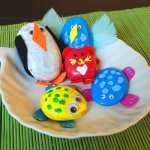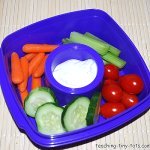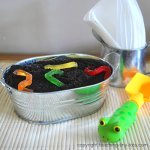Toxic Plastics - Are They In My Kitchen?
by Janet Stevens
(Beaumont Texas)
A Closer Look at Bisphenol-A or BPA
Unlike kitchens in the old days, today's kitchens often contain a wealth of plastic items, including many which come in contact with food. If a plastic storage container is sold specifically for storing food, does that mean it is free of toxic plastics? Not necessarily. They may contain BPA, an abbreviation for bisphenol-A. BPA is a toxic substance which can be found in such items as water bottles, toys and even drinking bottles used by babies and toddlers.
They can also be found in children's toys, including bathtub toys, canned food and drinks. Parents may feel that they've taken proper precautions but have no idea that their children are at risk. One reason for this is that BPAs are often put in plastics specifically made to be used with food. It doesn't make sense but consumers have to be pro-active, do their research and find ways to protect themselves and their families, particularly in the kitchen, where foods have a greater chance of coming in contact with plastics containing BPA.
Why is BPA of such concern? One primary reason is that these toxic substances don't just stay in the plastic but can leak out into whatever food or drink is in the container. They then get into people's bodies. If a baby drinks out of a bottle containing BPA, it may affect growth and development. Research studies have found connections between illnesses and even emotional and other problems in children and exposure to BPA. While the consensus is out, there is even research into the connection between autism and exposure to toxic plastics.
Babies and children are affected more when exposed to toxic plastic than teens and adults. BPA exposure isn't likely to be good for anyone but it is considered so dangerous that some countries, including Canada, have placed bans on baby bottles which contain BPA. The research has been convincing enough for officials there. For now, however, American consumers need to find out if plastic items contain BPA and make sure it does not come in contact with food in their kitchens. They also need to make sure that children don't put toxic plastics in their mouths.
Perhaps Canadian officials have read the research studies which indicate that early exposure to BPA can affect fertility. The substance can potentially change the hormone levels in human bodies. It may even lead to early puberty. What it does not do is allow the body to develop naturally. There is no reason anyone needs to use products containing toxic chemicals.
Alternatives to toxic plastics are readily available. Many glass and ceramic containers are perfectly safe and don't cause harm. Shopping in an eco-friendly store and making sure that containers are made of safe plastic or healthy materials can also help.
One easy way to figure out whether BPA is in a plastic container or bottle is to look for the recycling number found on it, usually on the bottom. A number 7 is a sign that BPA is present. Avoid all products with that recycling number on it and exposure to toxic plastics will be minimized. If a recycling number isn't visible, try to find alternative containers. Don't take a chance on putting toxic plastics into a kitchen.
Janet Stevens is a writer for My Baby Bedding Shop and is the loving parent of two. One boy and one girl. Her children are all grown up now but she loves writing about children and giving tips on certain scenarios that parents are faced with along the way. Janet sure hopes that you have found this article helpful.






